Skora…what’s a Skora? It’s a running shoe! And a beautiful one too:

According to Skora, their goal is to make shoes that encourage running that’s as biomechanically correct as possible, with minimal interference.
Over the last 6 weeks I have been testing the Skora Form as a training shoe for short distances of 4-5 miles. Personally, I don’t respond favorably to longer runs in such minimalist shoes (in other words, I tweak my arch or Achilles…) so I have to keep things relatively short.
Shoes like this are valuable training tools that can help build lower leg strength and promote a more economical running stride. When used correctly, they can actually reduce your chance of overuse injuries.
I love testing new running shoes to see how manufacturers are responding to the growing minimalist movement. Many major brands are making sweeping changes to their lineup of shoes and it’s interesting to see how they update old favorites.
Skora is a different story because they’re a new company. Instead of being entrenched in the old ways of making shoes that include an enormous heel lift and “advanced technology” like crash pads, cushioning “systems,” and “biomorphic” fits they’re free to start from scratch.
Their philosophy is centered around the tag line Run Real. Skora says on their website:
We believe that runners are smarter than most brands give them credit for. We are free-thinking and challenge conventional wisdom. We believe in common sense, rational principles and challenging the status-quo.
What Makes the Skora Form Unique?
The Form is unlike any running shoe I’ve ever worn. It’s not made from traditional materials – in fact, the upper is made from goat skin and has an interesting leathery smell. If you like that smell, you’ll love the Form.
While goat skin leather is an interesting choice it’s slightly warmer than mesh uppers you’re more familiar with wearing. I haven’t had any issues with it being too hot though, but I’ve only been training in them in mild weather. Casually wearing them barefoot for 1-2 hours also doesn’t make them smell bad either. A big plus!
The next thing you’ll notice from the images here is that the Form has asymmetrical lacing and is missing a traditional tongue. The lacing avoids the major tendon that goes from your big toe to the base of your shin. I’ve had problems with shoes irritating this area of my foot in the past so this was a great addition.
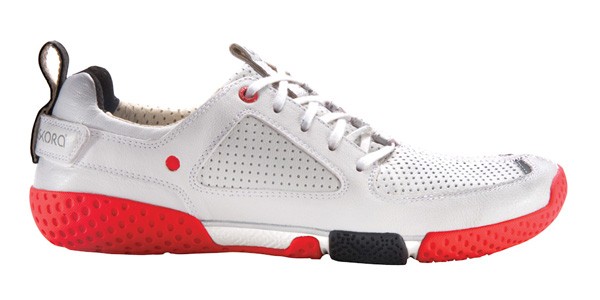
The tongue – or rather the extension of the upper underneath the laces – is a thin strip of leather that runs along the entire top of your foot, which makes it impossible for it to slide to either side during longer or faster runs. It made for a very glove-like fit, which I really like.
But it seemed the shoe doesn’t come up high enough on your ankle. The picture below is the outside of my left foot – you can see that around the ankle the shoe is very low. It’s a different feeling than most shoes and not something I was overly concerned with, but it took some adjustment.
If you’re prone to ankle sprains, be cautious if you’re running trails in the Form.
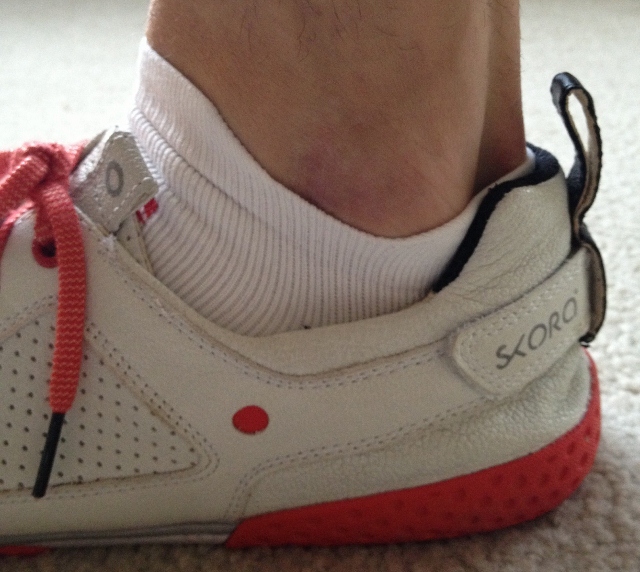
Now look at the sole of the Form: the red and black areas are hard, durable rubber that slightly restrict flexibility but provide great traction on asphalt. But because it’s hard rubber, I prefer running in the Form on dirt trails as opposed to the roads which was too jarring on my legs.
Even on rocky sections of trail with significant hills, I experienced no traction problems. I don’t believe the Form is designed to be a pure trail shoe but it works well on non-technical trails like in Rock Creek Park. I even ran in wet conditions on leaves and some mud and they worked well.
The heel is rounded on the bottom as you can see below. This felt odd at first since I strike on the outside edge of my heels and if I put hundreds of miles on the Form, may result in significant wear that could impact my foot strike. Nevertheless, after my first run in them I didn’t notice the difference.
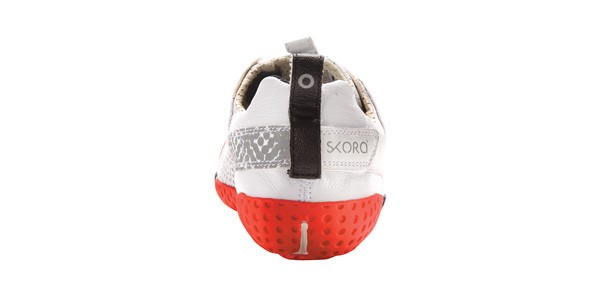
The Skora Form also comes with two sets of laces: white and red. This was a nice touch and I appreciated the flexibility. I enjoy bright shoes so I switched to the red laces, though I found them slightly too long.
Aside from two pairs of different colored laces, Skora presented the shoes in a way that would make Apple proud: they came in a magnetically sealed box that’s more like a piece of art than a shoebox. With a matte finish, you opened it using a tab and there was more information about the shoe on the inside.
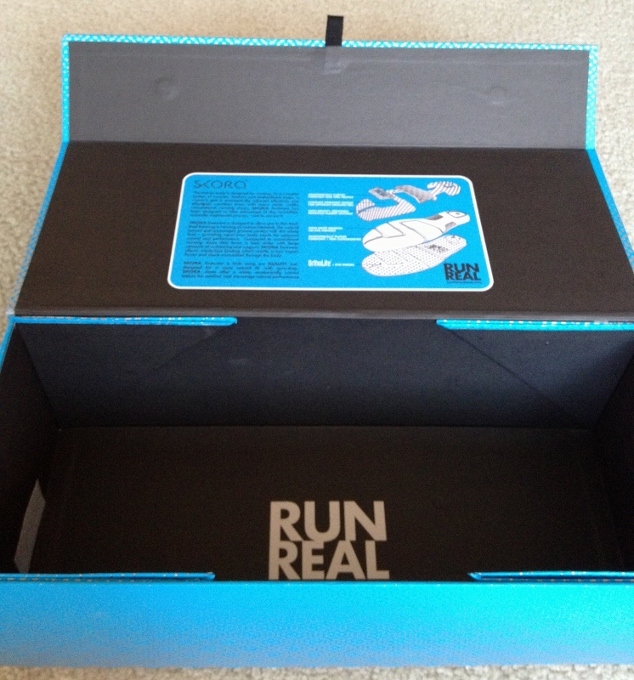
Who Should Wear the Skora Form?
I don’t think the Form is for everyone. First, it doesn’t offer much support and puts you only 13mm above the ground (9mm if you remove the insole) so you should be comfortable with a low shoe before buying the Form. Efficient runners who know their bodies can log some of their miles in them, or those who want a 0mm heel-toe drop and even “less shoe” than a model like the Minimus Road.
Good running form is a must when running in a shoe with as little support as the Form. If you run sloppy or over-stride then you should first work on becoming more economical before investing in a shoe like this.
Skora put together the graphic below to reinforce good running form habits, which I really like:
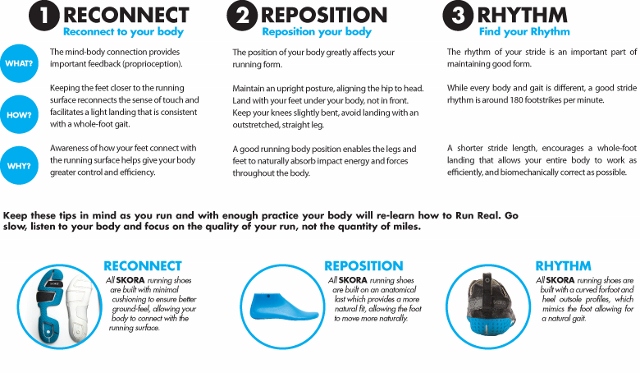
The Skora Form also comes with a hefty price tag of $185 so that’s a certain barrier for most runners who would use it as a supplementary training shoe. But, until 11/24/2012 use code FRIENDS15 to save 15% off your next order at SkoraRunning.com!
But if you want to treat yourself, you can get the Skora Form on Amazon here (with free shipping).
Get Jacked Up with Skora!
Skora created a fun promo video that gets me jacked up and excited to run every time I watch. Thought you’d like it too – enjoy!